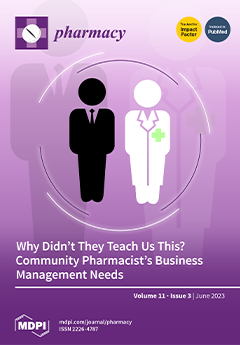During the COVID-19 pandemic, there was a large shift from face-to-face (FTF) to remote learning. Evaluating students’ perceptions of remote learning provides educators with opportunity to inform their instructional methods. This study sought to evaluate pharmacy students’ self-perceived (1) confidence, (2) preparedness, (3)
[...] Read more.
During the COVID-19 pandemic, there was a large shift from face-to-face (FTF) to remote learning. Evaluating students’ perceptions of remote learning provides educators with opportunity to inform their instructional methods. This study sought to evaluate pharmacy students’ self-perceived (1) confidence, (2) preparedness, (3) satisfaction, and (4) motivation following remote vs. FTF classes. An electronic survey was distributed to six pharmacy student cohorts enrolled in the University of Findlay College of Pharmacy during April 2021 to measure the objectives. The Kruskal–Wallis, Mann–Whitney U, and Spearman’s rank correlation tests were used to analyze the data (alpha = 0.05). A total of 151 students completed the survey. While the responses differed among the cohorts, first-professional year students reported lower motivation to study (
p = 0.008), engage (
p = 0.008), satisfaction with content presentation (
p = 0.05), preparedness for exams (
p < 0.001), and confidence to communicate (
p = 0.008) and succeed in a career (
p < 0.001) when studying remotely vs. taking FTF classes compared to fourth-professional year students. Positive correlations were observed between students who felt motivated to engage and study (ρ = 0.501,
p < 0.001), motivated to study and exam preparedness (ρ = 0.511,
p < 0.001), satisfied with course material presentation and professor accessibility (ρ = 0.688,
p < 0.001), and exam preparedness (ρ = 0.521,
p < 0.001), and felt prepared for exams and able to succeed in a pharmacy career (ρ = 0.573,
p < 0.001). Taking the above results into consideration, pharmacy educators may designate more time and instructional support to first-professional year students in an effort to improve students’ perceptions of motivation, satisfaction, confidence, and preparedness.
Full article





